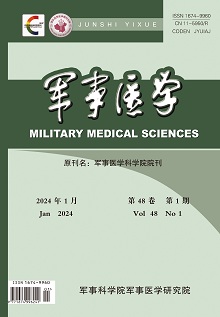Original articles
LI Mengyang, WANG Gui, QIAO Yamei, WANG Pingyu, JIN Min, YANG Dong, LI Junwen
Objective To investigate the effects of cinnamaldehyde, the main active component of cinnamon, on benzene-induced immune injury in mice and the related mechanism. Methods Forty male BALB/c mice were randomly divided into the control group, model group (benzene 500 mg/kg), cinnamaldehyde low, medium and high dose groups (5, 25, 50 mg/kg), with 8 mice in each group. Except the control group, mice in each group were treated with benzene by intragastric administration daily to induce immune and oxidative stress damage, but the intervention group was treated with cinnamaldehyde 5 times/week for 3 weeks. After medication, peripheral blood was collected 24 h after the last gavage for blood cell count, and the changes in body weight of mice in each group were observed.The pathological structure of the spleen and thymus was observed via hematoxylin-eosin (HE) staining. Peripheral blood mononuclear cells (PBMCs) of mice were extracted and the amounts of reactive oxygen species(ROS) and ATP in mitochondria were measured. Plasma levels of malondialdehyde (MDA) were measured using the barbituric acid method, the activity of glutathione peroxidase (GSH-PX) in plasmawith the dithiodinitrobenzoic acid methodand the activity of total superoxide dismutase (SOD) in plasma using the hydroxylamine method. Results After exposure to benzene, the body weight of the model group became lower (P<0.05). The spleen and thymus were damaged, and the indexes of the spleen and thymus were decreased (P<0.05). Counts of peripheral white blood cells and lymphocyteswere decreased (P<0.05). The activities of GSH and SOD in plasma were decreased (P<0.05), but the content of MDA was increased (P<0.05). The amount of mitochondrial ROS in PBMC was increased, while the ATP content was decreased (P<0.05). The weight of mice increased after treatment with cinnamaldehyde. The spleen and thymus tissues recovered well, and the indexes of the spleen and thymus were increased (P<0.05). Counts of peripheral white blood cells and lymphocytesin the high dose cinnamaldehyde group were increased (P<0.05). The activities of GSH and SOD in plasma were increased, while the content of MDA was decreased (P<0.05). The amount of mitochondrial ROS in PBMC was decreased, but the ATP content was increased (P<0.05). Treatment with cinnamaldehyde could alleviate the damage to the mitochondrial function of PBMC induced by benzene in mice, and 50 mg/kg was the best dose (P<0.05). The therapeutic effect of cinnamaldehyde had a dose-response relationship. Conclusion Cinnamaldehyde can inhibit benzene-induced immune injury and oxidative stress injury in mice by delivering an antioxidant effect and improving mitochondrial enhancement of PBMC.
